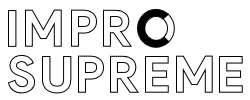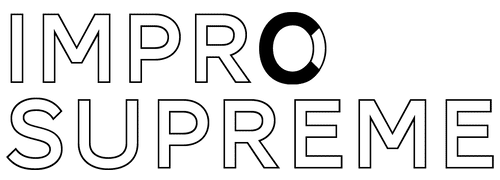It has taken me a long time to understand that the path to freedom in clowning passes through creating clown acts. The shorter and simpler, the better.
I wrote this piece in January 2014, towards the end of Ira Seidenstein’s fifth annual Quantum Clown Residency (QCR), a 3‑week physical acting and clown course in Brisbane, Queensland, Australia.
The picture above was taken at some point during the course – I’m posing and probably contemplating the next steps for my solo show Plan C.
A Report From Inside a Clown Course
This is the fifth time I participate in Ira Seidenstein’s Quantum Clown Residency. Why, you might wonder, have I chosen to come back here yet again?
I would probably wonder that myself too, if I didn’t know. The reason is simple: I can’t think of a better investment in myself, my development as an artist and my general business of making a living.
I feel I’m on a path to freedom – and I want to keep going.
The focus of the QCR this year is on creating clown acts, which gives the course a whole different finish compared to the previous four years (Clown, Mime, Shakespeare, Authentic Commedia). Having participated in all of them, it feels to me like QCR is now completing a run. For me this is the year that brings it all home.
Of course, by now I’m very familiar with Ira’s workshop template The Four Articulations that encapsulates his method. But because it’s based on an integral approach – and a lifetime of professional experience in the performing arts – there is much more to learn from participating in the QCR than just exercises and other bits of information.
In the video below you can see Ira teach at the first QCR in 2010 (and yes, you will also catch a glimpse of me doing an exercise!).
The Three Stepping Stones to Freedom
Three aspects of learning finally stand out really clearly to me. They are, in my understanding, essential stepping stones on the path to freedom in clowning:
- First, there’s what I’m able to locate within myself – or identify more and more clearly within my experience of clowning through continued training with The Four Articulations under Ira’s watchful eye.
- Second, there’s a visual learning process: learning to see what works theatrically, through observing the other participants and Ira himself when he demonstrates.
- Third, there is something else, something that is closely linked to submitting oneself to the exercises and watching others do the same. As I see it, it finally comes down to something as simple as accepting fundamental human reality.
This basic acceptance is learned in a very concrete way – in the moments we are able to be truly present in the room and experience what is actually happening there.
Not just seeing what the other people are doing, but feeling what’s happening to them and between them.
A Balance Between Letting Go and Control
The clown training with Ira is always a fine balance between letting go and control. The work we do each day is largely improvisational and requires us to be spontaneously creative – but within defined parameters.
We must each find our own path to freedom. That is the challenge as we strive to hit the specific technical marks as we move through the different training exercises. The focus on creating clown acts forces each participant to work and think like an artist – and an artisan.
We might call this being constructively creative.
It builds a more complex type of awareness than practising straightforward improv theatre. This one is more formal and analytic in nature since we have to be able to recall and remember what we’ve just done, not only in terms of actions and story, but also choreographically.
This awareness then feeds back into the improvisational work, where eventually – ideally! – we become aware of what we are doing as we are doing it. These are the rare moments when it all comes together and the gods rejoice.
The whole point of practising is to increase the frequency of these moments and also sustain them longer. Supreme clowning happens when we reach the sublimation point of being spontaneously creative and constructively creative at the same time.
Everything Converges in Good Clowning
We practise the convergence of these two ways of creating in a new exercise that I literally saw Ira invent early one morning six months ago while walking down a small road in Tuscany.
The exercise is called The World’s Briefest Mime and in it we have about two minutes to create a short but complete mime piece with a beginning, middle part and end.
In the end, it shouldn’t matter whether we improvise or perform an act – in as far as we operate consistently from this point of convergence.
Locating this point within ourselves, moving it and moving with it, actually becoming it: a dot, an almost nothing, the tip of the sharpest arrow shooting through time, the dynamic point through which our very existence flows – that is the goal.
As such, clowning is a metaphysical balance act of sorts, but an act that remains profoundly human and within anybody’s reach. It’s a matter of feeling the flow of our physical, emotional, intellectual and spiritual existence.
To me that is the point of clowning, good clowning is that point, dynamic to the core and determining our otherwise seemingly static physical existence.
OK, no more philosophising about clowning. Let’s get back to the more concrete path to freedom.
Three More New Exercises for Clowning
Three other new auxiliary exercises have been included in the course this year that are particularly valuable for reaching and sustaining the dynamic mode of being that is required for good clowning:
- In The Essence of Nothing we learn to feel by tapping into ‘everything’ – the present flow of our existence – in a split second.
- In The Cleopatra Exercise we practise and enjoy the thrill of instant physical acting – consciously transforming and changing the emotional attitude we present in a given situation.
- In The Clown Knows Exercise we learn how to clown in the simplest possible way (?) by modulating and sustaining feeling through using our body and voice.
These last two exercises also provide a practical opportunity to test Ira’s assertion that “a clown is someone who does what he (or she) wants, when he wants, however he wants and for as long as he wants”.
On My Own Path to Freedom
Already after the first week of the course this year I noticed for myself that I started looking differently at what happened around me. I suddenly saw how everything and anything could be used in a clown act or quickly turned into one.
I now see more potential around me, more openings for ‘natural drama’ – both comic and tragic. It gives me more choice, not one path to freedom, but many. The possibility of clowning is ever present, whether I choose to engage in action or not.
This freedom is inside of me and I carry it with me wherever I go.
With its focus on creating clown acts, I think Ira’s course this year has functioned as a rite of initiation into the clown world – a living global culture with traditions passed on from generation to generation and with as many different expressions as there are different cultures, places and people.


